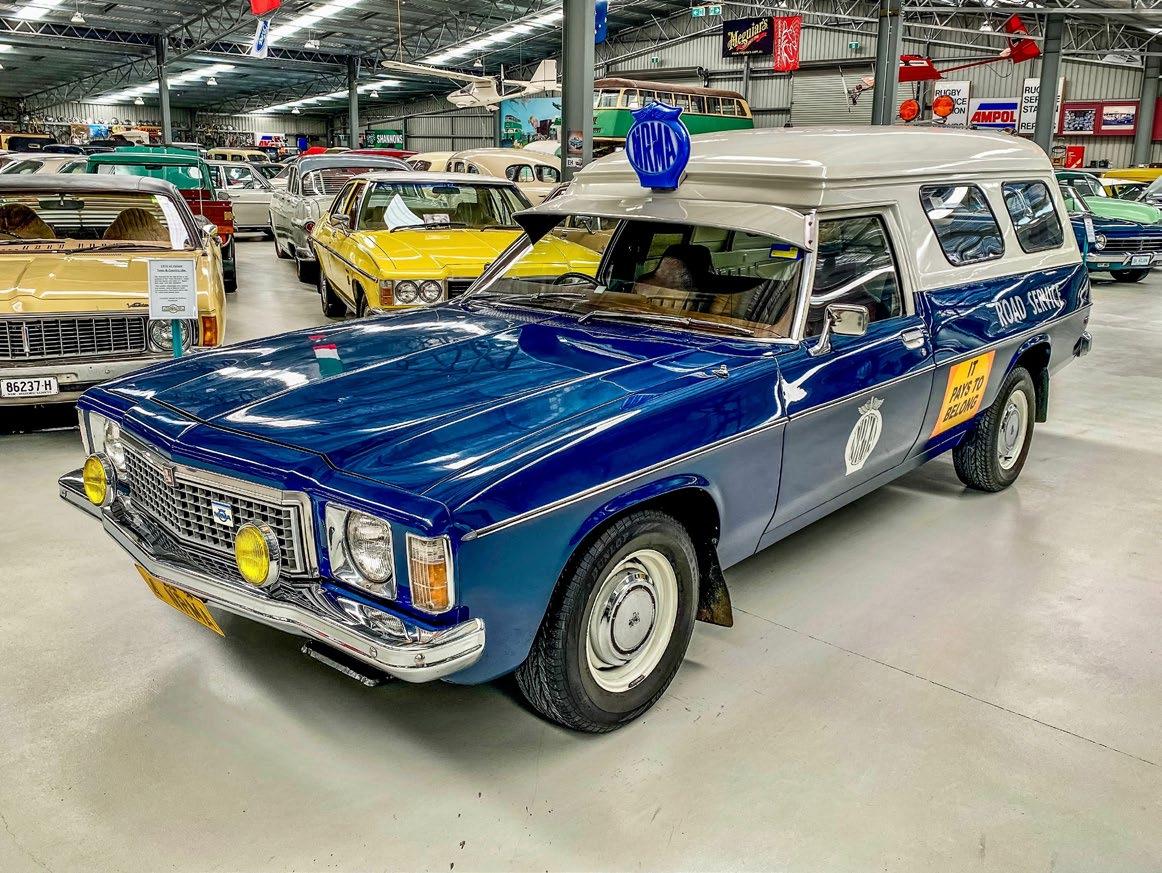
5 minute read
Beyond the lion badge
Holden didn’t just build cars. It helped to build Australia.
If you’re of a certain vintage, you might remember the days when Studebakers rumbled along the nation’s roads. Perhaps you’ve been around long enough to remember Wolseleys, Austins or Morrises. If you’re a bit younger, maybe you recall the Leyland or the Datsun.
These days, unless there’s a car club event on near you somewhere, you won’t see any of these once incredibly popular makes on our roads.
Soon, another iconic name will join them in the automotive halls of Valhalla: the Holden.
The demise of Holden was once unthinkable. Australia was a nation divided between Holden families and Ford families. Holden race car driver Peter Brock was “the king of the mountain”. How could a brand so integral to the national psyche possibly just disappear, like the Studebaker, the Morris and the Datsun? Yet, in 2017, Holden’s American parent company, General Motors, stopped producing Holdens in Australia. Then, in 2021, it retired the brand completely. It was the end of a 165-year-long story.
Holden began as a saddlery in Adelaide in 1856 and entered the fledgling auto industry in 1917, making car bodies for imported Chevrolet chassis. It became General Motors Holden in 1931 and, in 1948, produced the first car “made in Australia, for Australia”, the FX 48-215. Over the next few decades, Holden would become a household name—responsible for more than 40 per cent of all car sales by 1958—and producing some of the nation’s best loved cars.
The Holden Monaro, based on the HK series, was launched in 1968 as a highperformance vehicle. A two-door pillarless hardtop or coupe, it came with either a straight-six or a V8 engine. There was also a four-door sedan version. It took both top honours in the Bathurst 500 and Wheels magazine’s Car of the Year that same year and quickly won lifelong fans. The model was retired in 1976 then returned between 2001 and 2006 (based on the VX, VY and VZ series).
Another icon of the road was the HZ Sandman—a panel van that became synonymous with surf and youth culture in the 1970s and 80s. They came with a standard 173-cubic-inch “red” inline six, but most owners opted for either the 253- or 308-cubicinch Holden V8 with either a four-speed manual or three-speed ‘Tri-Matic’ automatic transmission.
The LJ Torana was a popular mid-sized car produced from 1967 to 1980. It was based on the British Vauxhall Viva and came in four or six cylinders and up to 3.3 litres. With wider wheels and sports styling, it was a zippy performer. The top-of-the-line model (the Torana GTR XU-1) produced upwards of 200 horsepower, making it a popular choice for traffic police.
The larger Kingswood was another icon of the road. It replaced the Holden Special after 1968 (when the HK was introduced) and was produced until the WB series in 1985 when it was, in turn, replaced by the Commodore. It was a spacious, comfortable, family car—and very popular in the suburbs. The Kingswood was a vehicle to aspire to, if you didn’t own one, and to be proud of, if you did.
And that, too, is part of the Holden story. Perhaps it’s part of why the make became such a part of the nation’s cultural fabric?
Holden didn’t just make cars “in Australia, for Australia”, it was literally making Australian communities, too. The company’s manufacturing plants—at Woodville and Elizabeth in South Australia, Fisherman’s Bend and Dandenong in Victoria, Pagewood in New South Wales, and Acacia Ridge in Queensland—provided skilled jobs that supported thousands of families. Holden wasn’t just building cars; it was helping to build the great Australian dream of living a free and prosperous life.
But by the 1980s, there were signs the business was starting to struggle. It closed Pagewood. The Federal Government lowered import tariffs on overseas manufactured cars. The plant closures and job losses continued. In the early 2000s, the company recorded a loss of $290 million. Federal and State Governments of all colours had been stepping in to prop up the nation’s struggling car making industry with enormous grants, but they would prove to be insufficient in the long run.
Even as Holden produced the Commodore SS — a vehicle that would become, for a while, the symbol of the “ cashed up bogan” during the mining boom years of the mid-2000s — the writing was on the wall for Holden.
The sleek SS, which was popular as both a ute, passenger car, and as a high-performance HSV, could not save the brand from its money woes. In 2013, just months after long-time rival Ford took the same decision, Holden announced it would stop producing cars in Australia. The last 950 automakers in Australia finished up at Holden’s Elizabeth production plant in October 2017, closing the book on Australian car manufacturing.
While it might be true that the Holden name is going the way of the Studebaker, the Morris and the Datsun, the nation-building spirit of the brand lives on in the men and women of the Capricorn Community and the wider repair industry. As Holden built communities, so are we all, through our cooperative. As Holden provided good jobs and careers and helped people raise their families and realise their dreams, so do our current Members, Preferred Suppliers (and even Capricorn).
So, Holden isn’t really gone. Its spirit lives on in all of us, and there are also sure to be many of them gracing workshops for years to come yet.
Images source: Shutterstock and State Library of South Australia BRG-213-1-3-129, BRG213_27_9_3A_1, 213-65-30-1





